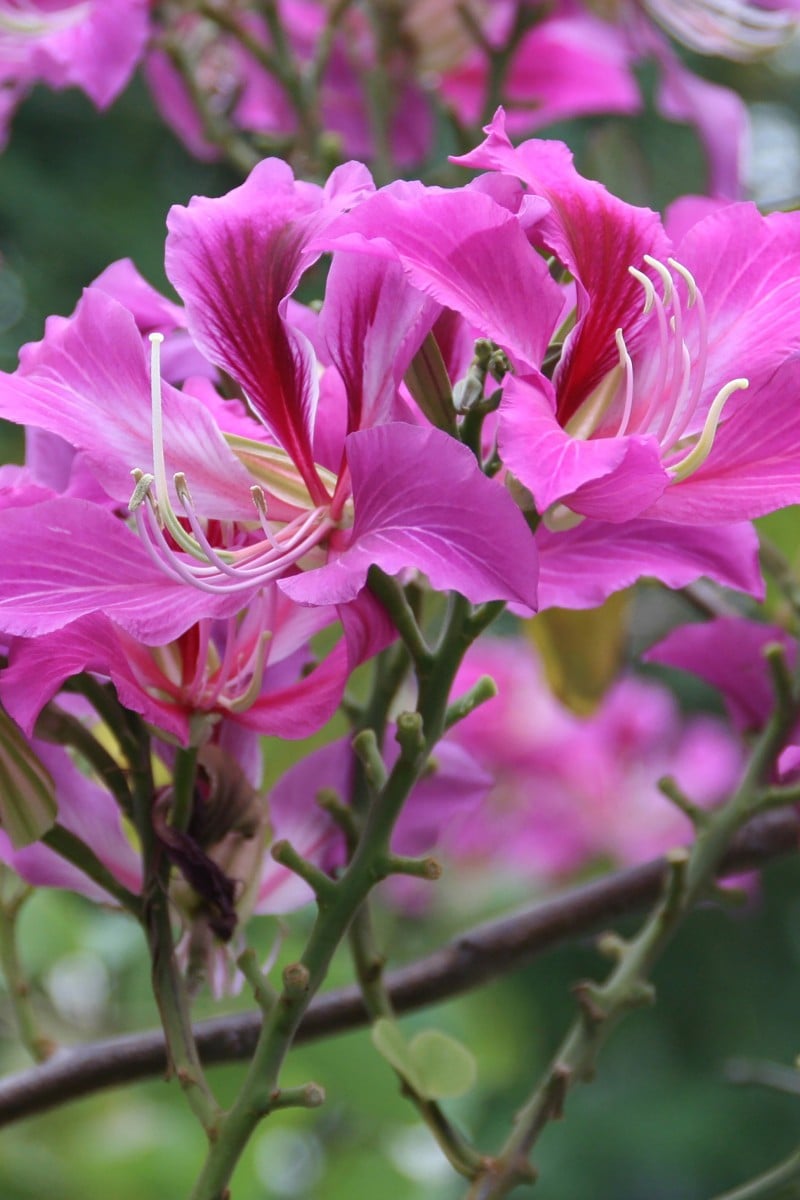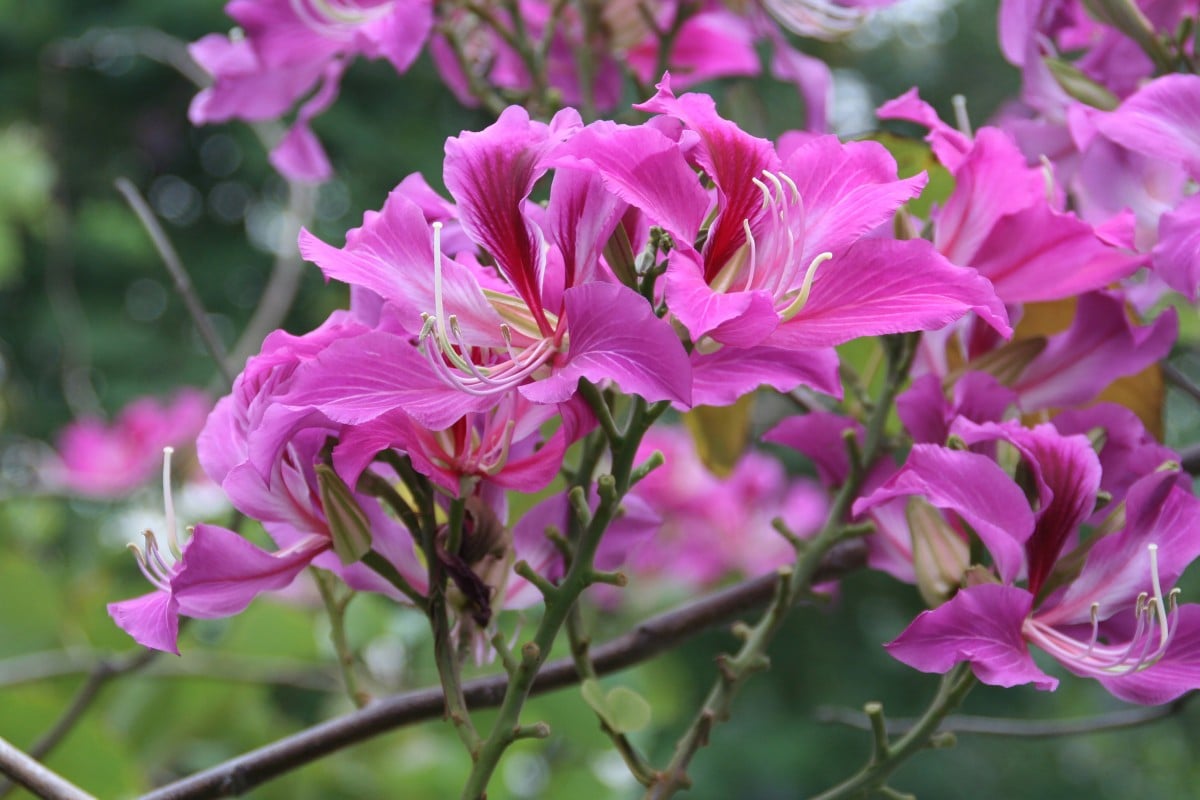
- From the bauhinia, chosen as the city's symbol, to the festive-sounding firecracker vine, here are some of the most stunning examples of flora in the 852
- Being out in nature has been proven to benefit our mental health, so plan a day out to spot these beauties - just remember not to pick them
 You may have guessed it by the name, but the Hong Kong orchid tree is native to the city.
You may have guessed it by the name, but the Hong Kong orchid tree is native to the city.Living in a concrete jungle like Hong Kong can make it easy to overlook the beauty of the nature around us. In fact, there is greenery everywhere, from the flower on Hong Kong’s flag to trees that produce flowers that look just like fireworks. Here are six plants that are in bloom this winter.
Hong Kong orchid tree (洋紫荊)
This species is native to Hong Kong, and is named after Sir Henry Blake, the British governor of the city from 1898 to 1903. Also known as the Bauhinia, it was adopted as the city’s symbol on July 1,1997, and appears on its coat of arms, flag and coins.
Each flower is made up of five purplish-red petals, with darker stripes on the top petal, and heart-shaped leaves. This tree was discovered around 1880 near the ruins of a house around Pok Fu Lam.
Despite its name, Hong Kong orchid trees are not orchids, but legumes (plants that have their seeds in a pod) and are related to common peas and beans. Because this species is unable to produce seeds, it is believed that the first Hong Kong Orchid Tree was grown by cutting the stem of a parent tree and planting it.
In bloom: between November and March
Where to find them: Kowloon Tsai Park, Quarry Bay Park, Tai Po Waterfront Park, Pok Fu Lam
Hong Kong camellia (香港茶)
The Hong Kong camellia was first discovered in 1849 on Victoria Peak. It is an evergreen tree (it doesn’t lose its leaves in the winter), and its branches are red-brown with smooth, leathery leaves. Of the 10 species and one variety of Camellia native to Hong Kong, only the Hong Kong Camellia has red flowers. This makes it a popular choice for house plants.
In bloom: between December and February
Where to find them: Victoria Peak, Pok Fu Lam, Mount Nicholson, Mount Parker, and Shing Mun Arboretum
5 easy hikes in Hong Kong perfect for a beginner
Ivory coral tree (象牙花)
Even though the Ivory Coral Tree is native to Brazil, it is a common sight in Hong Kong. This plant can grow up to three metres in only two years.
When in bloom, the plant produces bunches of red flowers that are shaped like tiny candlesticks. The petals of the flowers are edible, and are used in traditional medicine to cure a number of problems, including coughs, muscle pain, and wounds. Some tribes in the South of Brazil even use it to treat toothache.
In bloom: between December and February
Where to find them: Aberdeen Promenade, Statue Square Gardens, Sun Yat Sen Memorial Park, Cherry Street Park, and Hong Kong Zoological and Botanical Gardens
Firecracker vine (炮仗花)
The Firecracker vine is a climbing plant that usually flowers in December. It earned its name thanks to its bunches of bright orange funnel-shaped flowers that look like strings of firecrackers. The plant also gives off a popping sound when stamped on, just like an exploding firecracker.
The flowers are usually in clusters of 15 to 20, and the base of each flower contains sweet, non-toxic nectar. Even though the firecracker vine is native to (comes from) Central and South America, it can be found everywhere in Hong Kong.
In bloom: between January and June
Where to find them: most gardens/parks in Hong Kong
Hong Kong scientists warn of more severe bleaching of local coral reefs
Purple camel’s foot (紅花羊蹄甲)
The purple camel’s foot is native to Hong Kong and South China. It can also be found in Southeast Asia and many parts of Africa. Its leaves are hoof-shaped with two lobes – just like a camel’s foot.
Its scented light pink flowers make it very popular with gardeners. The flowers are easy to spot when in bloom, as the trees loses its leaves at the same time.
The purple camel’s foot has many uses. Its flowers and shoots are commonly used in South Asian cooking, while the leaves and pods make good food for sheep, goats, and cattle. The wood of the tree can also be used to
build fires.
In bloom: between November and January
Where to find them: Chai Wan Park, Hong Kong Park, Sha Tin Park, and Shek Kip Mei
Paperbark tree (白千層)
The paperbark tree is native to Australia, and was first introduced to Hong Kong in the late 19th century. Paperbark trees were planted in low-lying areas to soak up water as they are hardy and resistant to wind. More importantly, they grow very quickly.
The species’ name refers to its bark, which peels off the trunk like sheets of paper. Its white needle-like flowers grow at the end of the branches. The fruits are shaped like cups and usually found along the stems. They contain many tiny seeds which are sometimes stored for years, and only open when the plant, or part of it, dies or is heated in a bush fire.
In bloom: between November and February
Where to find them: Aberdeen Promenade, Statue Square Gardens, Sun Yat Sen Memorial Park, and along most streets in the New Territories
